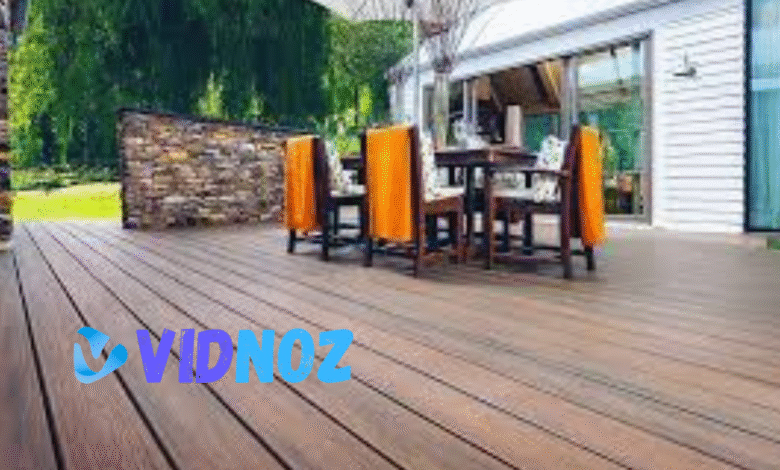Outdoor Project Mastery: Creative Ideas, Expert Tips, and DIY Guides for Every Space

Introduction
Outdoor projects offer more than just home improvement—they’re a way to reconnect with nature, express creativity, and add tangible value to your property. Whether you have a sprawling backyard or a compact balcony, there’s always a project waiting to transform your space. From building functional garden features to crafting cozy entertainment nooks, outdoor projects allow homeowners and renters alike to create a personalized environment that blends relaxation, utility, and beauty.
Beyond aesthetics, these projects have practical benefits. They increase curb appeal, potentially raise property value, and offer mental health perks through increased time spent outdoors. Moreover, outdoor projects foster skills such as carpentry, landscaping, and problem-solving, making the process as rewarding as the final outcome. With the right planning, tools, and vision, even beginners can take on outdoor upgrades that bring lasting enjoyment.
This guide will walk you through every step—starting with planning, diving into project ideas for every space, covering the essential tools and safety practices, and finishing with a detailed DIY example. Whether you’re a weekend warrior or a first-timer, this comprehensive guide is your go-to resource for all things outdoor project related.
Planning Your Outdoor Project: Laying the Foundation for Success
Planning is the cornerstone of any successful outdoor project. Before diving into DIY videos or purchasing materials, assess your outdoor area carefully. Consider the layout, sunlight exposure, soil condition (if planting), and the overall purpose—entertaining guests, growing food, or creating a private retreat. Mapping out dimensions and observing how your space is used throughout the day can inform smarter design decisions that align with both your lifestyle and the environment.
Once you’ve evaluated the space, define clear goals for your project. Are you installing a deck for family dinners or creating a zen garden for solitude? These objectives will shape the design, materials, and level of complexity. Budgeting is another key component—factor in material costs, tool rentals or purchases, and any labor expenses if you’re outsourcing parts of the job. Remember to include a contingency budget for unexpected costs, which are common in outdoor projects.
Equally important is scheduling. Outdoor work is weather-sensitive, so plan your timeline with seasonal changes in mind. Break down your project into phases and assign reasonable time estimates to each. If your project involves construction or changes to existing structures, check local zoning laws and obtain necessary permits. Some homeowners’ associations (HOAs) may also have restrictions, especially for visible or structural modifications. A well-thought-out plan not only saves money and time but also prevents legal headaches and ensures your project runs smoothly from concept to completion.
Creative Outdoor Project Ideas for Every Type of Space
Outdoor projects don’t need to be grand to be impactful. Whether you’re working with a spacious backyard or a modest patio, there’s a solution for everyone. In gardens and large yards, consider building raised beds or vertical herb walls to blend function and beauty. Pergolas and gazebos offer shade and elegance, ideal for entertaining or relaxing. You can also install a fire pit surrounded by Adirondack chairs for a cozy, year-round gathering space.
For decks and patios, get creative with refinishing techniques or even painting designs directly onto the surface. Add ambiance with string lights, container plants, or water features like a tabletop fountain. If you enjoy outdoor cooking, a DIY kitchen or grilling station can transform your patio into a culinary retreat. Using weather-resistant furniture and smart storage options also helps keep the space organized and functional.
Those with smaller spaces—like apartment balconies—can still benefit from thoughtful design. Utilize vertical space with hanging planters or wall-mounted shelves for greenery. Install foldable furniture to maximize versatility, and consider privacy screens to create a more intimate atmosphere. With a few creative hacks, even the smallest balcony can become a tranquil escape.
For families, outdoor projects can be a fun way to bond. Build a treehouse, set up a sandbox, or create a chalkboard wall for endless playtime. Kid-friendly garden plots are also a hit, encouraging learning through nature. With a blend of practicality and imagination, there’s an outdoor project to suit every household.
Tools, Materials, and Safety Tips for Outdoor Projects
The right tools can make or break your outdoor project experience. Beginners should start with a solid toolkit that includes a hammer, drill, measuring tape, level, and circular saw. As projects become more complex, tools like post hole diggers, angle grinders, and jigsaws may come into play. Renting tools is often a cost-effective option, especially for specialized equipment you won’t use frequently.
Materials vary based on the type of project, but always prioritize durability and weather resistance. Pressure-treated wood, stainless steel screws, and outdoor-rated paints or finishes help your creation stand the test of time. For sustainable options, consider bamboo, recycled plastic, or reclaimed wood. Not only are these choices eco-friendly, but they also add unique character to your designs.
Safety should be at the forefront of every DIY effort. Always wear protective gear such as gloves, goggles, and masks, especially when cutting, drilling, or using chemicals. Follow manufacturers’ instructions for all tools and check electrical cords and connections for damage. Keep a first aid kit nearby, and if using power tools for the first time, watch tutorials or seek guidance from experienced users. Involving children? Set clear boundaries and supervise closely to avoid accidents.
Sustainability is another crucial element. Collect rainwater for gardening projects, use solar lighting, and choose plants native to your region to reduce water use. These small decisions contribute to a greener project that aligns with modern eco-conscious values while still delivering on aesthetics and function.
Step-by-Step Guide to Executing a Simple Outdoor Project
Let’s walk through one of the most beginner-friendly and satisfying outdoor projects: building a raised garden bed. Start by choosing a location with ample sunlight—6 to 8 hours of direct light is ideal for most vegetables and herbs. Mark your dimensions (common sizes are 4×4 feet or 4×8 feet) and gather materials: rot-resistant wood, screws, a power drill, landscape fabric, and soil.
Cut your wood to size and assemble the frame using galvanized screws to prevent rust. Line the interior with landscape fabric to prevent weeds while allowing drainage. Place your frame on level ground and fill it with a nutrient-rich mix of compost and soil. Once filled, you’re ready to plant your seeds or starter plants. Herbs, tomatoes, peppers, and lettuce are great for beginners.
During construction, measure twice before cutting and check for squareness at every corner. This ensures a sturdy, balanced structure. If desired, personalize your bed with non-toxic paint, stenciled labels, or decorative edging. You can even add a trellis at one end for climbing plants like beans or cucumbers.
Common mistakes include using untreated wood that rots quickly, placing the bed in shaded areas, or overwatering. Prevent these issues by choosing cedar or redwood, checking sun exposure throughout the day, and using a moisture meter to gauge watering needs. In just a weekend, you’ll have a productive garden feature that brings beauty, food, and satisfaction to your outdoor space.
Conclusion
Outdoor projects are a gateway to personal expression, skill-building, and enhanced living spaces. Whether you’re crafting a family play area, installing garden features, or creating a relaxing retreat, the key to success lies in thoughtful planning, appropriate tools, and a dash of creativity. With endless possibilities and scalable complexity, these projects offer something for every budget and skill level.
By transforming your outdoor area, you’re not just upgrading your home—you’re investing in your well-being and the environment around you. So, gather your tools, sketch your ideas, and take the first step toward outdoor project mastery.
Also Read: ecryptobit.com wallets
